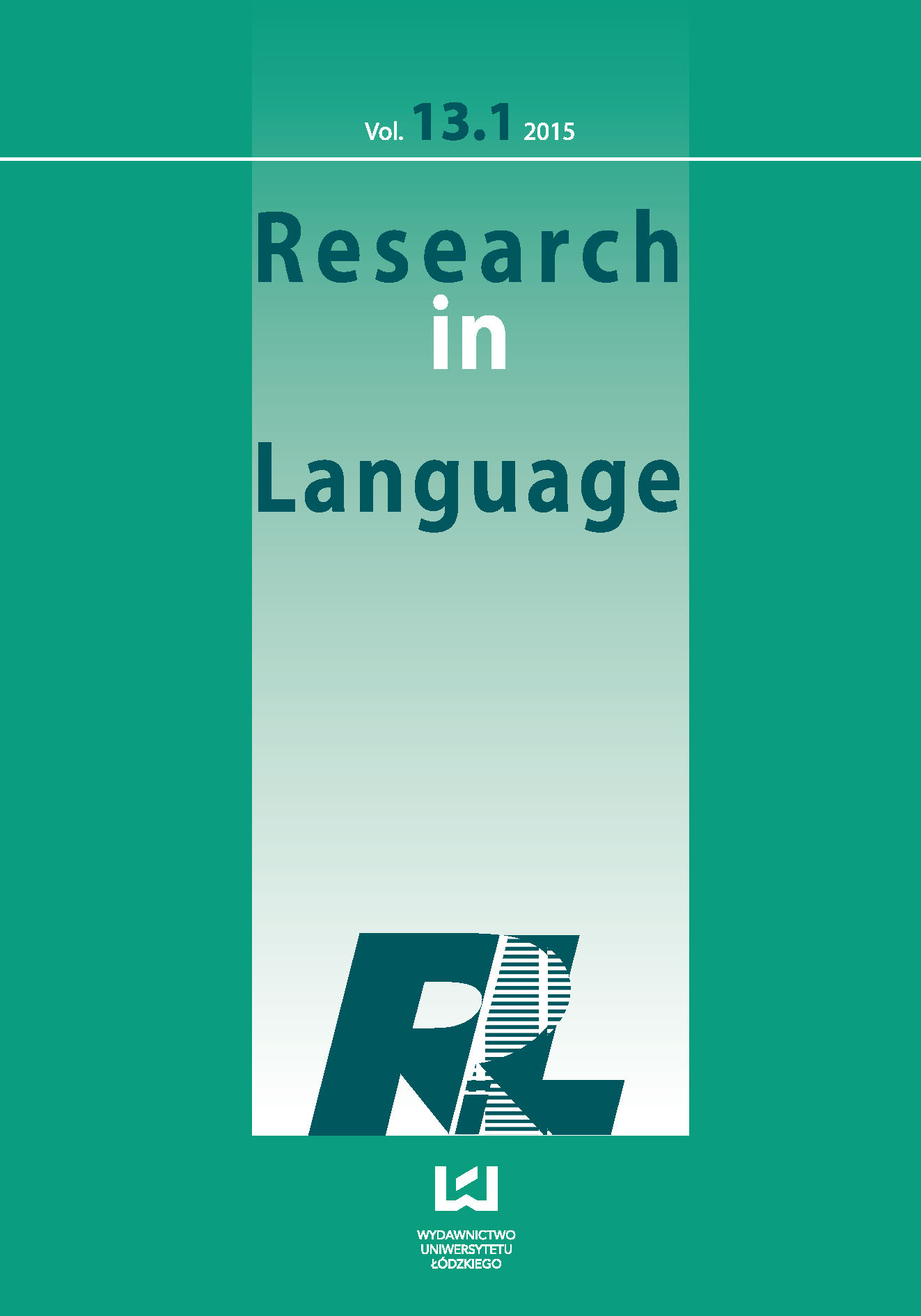Computational Approaches to Exploring Persian-Accented English
DOI:
https://doi.org/10.1515/rela-2015-0012Keywords:
-Abstract
Methods involving phonetic speech recognition are discussed for detecting Persianaccented English. These methods offer promise for both the identification and mitigation of L2 pronunciation errors. Pronunciation errors, both segmental and suprasegmental, particular to Persian speakers of English are discussed.
References
Aghai, L. (2011). The Acquisition of the English Phonological System by Persian Speakers. M.A. Thesis, University of Texas at San Antonio.
Google Scholar
Alameen, G. (2014). The effectiveness of linking instruction on NNS speech perception and production. Ph.D. Thesis, Iowa State University.
Google Scholar
Boudaoud, M., & Cardoso, W. (2009). The variable acquisition of /s/ + consonant onset clusters in Farsi-English interlanguage. In M. Bowles et al. (Eds.), Proceedings of the 10th Generative Approaches to Second Language Acquisition Conference (GASLA 2009) (pp. 86-104). Somerville, MA: Cascadilla Proceedings Project.
Google Scholar
Eskenazi, M. (2009). An overview of spoken language technology for education. Speech Communication 51, 832-844.
Google Scholar
Evanini, K., & Huang, B. (2012). Automatic detection of [θ] pronunciation errors for Chinese learners of English. Proceedings of the International Symposium on Automatic Detection of Errors in Pronunciation Training, 71-74.
Google Scholar
Farhadi, R. (1955). Le persan parlé en Afghanistan. Paris: Klincksieck.
Google Scholar
Franco, H., Bratt, H., Rossier, R., Gadde, V. R., Shriberg, E., Abrash, V., & Precoda, K. (2010). EduSpeak®: A speech recognition and pronunciation scoring toolkit for computer-aided language learning applications. Language Testing 27(3), 401-418.
Google Scholar
Gavalda, M., & Schlueter, J. (2010). “The truth is out there”: Using advanced speech analytics to learn why customers call help-line desks and how effectively they are being served by the call center agent. In A. Neustein (Ed.), Advances in Speech Recognition: Mobile Environments, Call Centers and Clinics (pp 221-243). New York: Springer.
Google Scholar
Hall, M. (2007). Phonological Characteristics of Farsi Speakers of English and L1 Australian English Speakers’ Perceptions of Proficiency. M.A. Thesis, Curtin University.
Google Scholar
Hayati, J. (1997). A constrastive analysis of English and Persian stress. Papers and Studies in Contrastive Linguistics 32, 51-56.
Google Scholar
Keshavarz, M. H., & Ingram, D. (2002). The early phonological development of a Farsi-English bilingual child. International Journal of Bilingualism 6(3), 255-269.
Google Scholar
Krasnova, E., & Bulgakova, E. (2014). The use of speech technology in computer assisted language learning systems. In A. Ronzhin et al. (Eds.), Speech and Computer: 16th International Conference, SPECOM 2014. Springer.
Google Scholar
Miller, C., Strong, R., Jones, E., & Vinson, M. (2014). Employing phonetic speech recognition for language and dialect specific search. In Proceedings of VarDial Workshop @ COLING 2014, Dublin.
Google Scholar
Mirhassani, A. (2003). A Constrative Analysis of Persian and English Parts of Speech. Tehran: Zabankadeh.
Google Scholar
Nexidia, T. (2013). North American English Guide. Product documentation.
Google Scholar
Perkins, R. C. (2012). Linguistic identifiers of L1 Persian speakers writing in English: NLID for authorship analysis. Ph.D. Dissertation, Aston University.
Google Scholar
Rafat, Y. (2010). A socio-phonetic investigation of rhotics in Persian. Iranian Studies 43(5), 667-682.
Google Scholar
Soltani, M. A. (2007). Contrastive analysis of English-Persian intonation. Azad University-Tehran School of Medicine.
Google Scholar
Strik, H., Truong, K., de Wet, F., & Cucchiarini, C. (2009). Comparing different approaches for automatic pronunciation error detection. Speech Communication 51, 845-852.
Google Scholar
Weinberger, S. (2015). Speech Accent Archive. George Mason University. Retrieved from http://accent.gmu.edu.
Google Scholar
Wilson, L., & Wilson, M. (2001). Farsi speakers. In M. Swan & B. Smith (Eds.), Learner English: A teacher’s guide to interference and other problems (pp. 179-194). Cambridge.
Google Scholar
Windfuhr, G. (1997). Persian phonology. In A. S. Kaye (Ed.), Phonologies of Asia and Africa.Winona Lake (pp. 663-677). Indiana: Eisenbrauns.
Google Scholar
Yavaş, M. (2006). Applied English Phonology. Oxford: Blackwell.
Google Scholar










